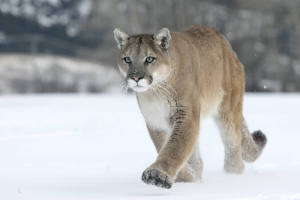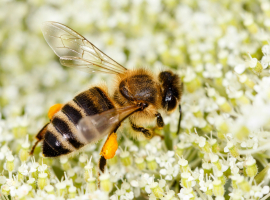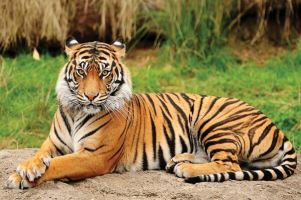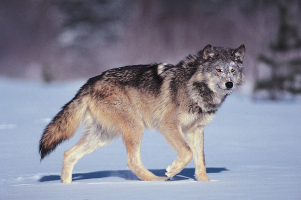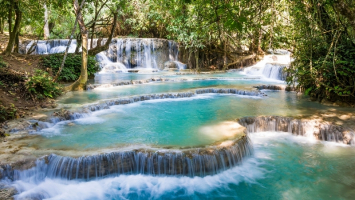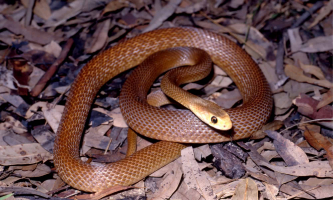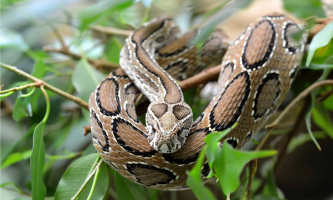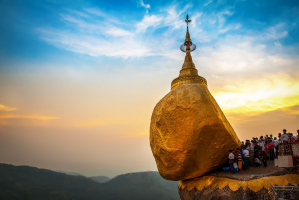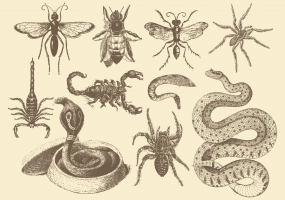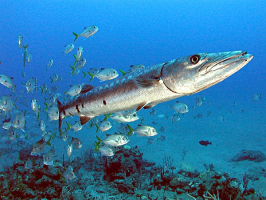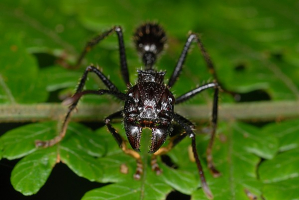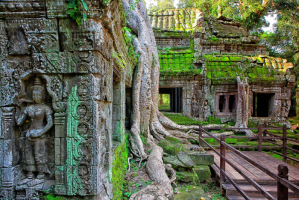Top 10 Most Dangerous Animals in Asia
The animal world is extremely diverse and rich. Many animals are impressed by their beautiful appearance, and friendly personality, there are also very ... read more...dangerous animals. Let's find out with Toplist the most dangerous animals in Asia!
-
One of the most dangerous animals in Aisa is the Komodo dragon, also known as Varanus komodoensis, is the world's biggest reptile. While most Komodo dragons are between 1.5 and 2.6 m long and weigh 150 to 250 pounds, some of the largest reach lengths of over 3 m and weigh approximately 350 pounds. Komodo dragons move at a 25 km/h top speed.
Because they are considered vulnerable, Komodo dragons, which are found in the wet Indonesian archipelago, are a protected species. However, people also need to be protected when confronted by a Komodo dragon, as it is a dangerous animal with sharp fangs, a strong jaw, and powerful claws.
From huge animals like the water buffalo to snakes, birds, smaller mammals, and carrion, a Komodo dragon's diet is diverse. Although Komodo dragons don't actually attack people since they don't come into touch with them, they do contain venom in their jaws that are made of harmful proteins, not germs as we once thought. A Komodo dragon bite might result in a serious infection and even necessitate amputating the affected area.
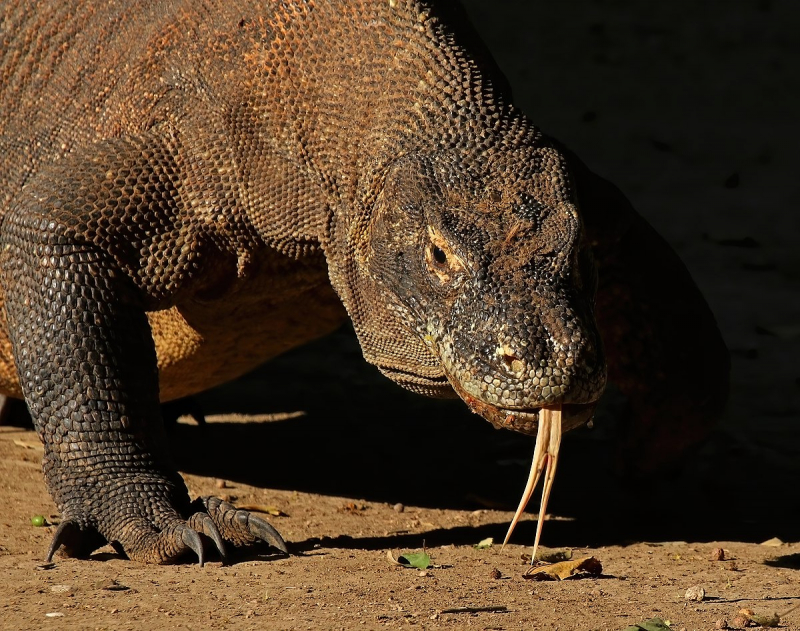
Photo: wikipedia 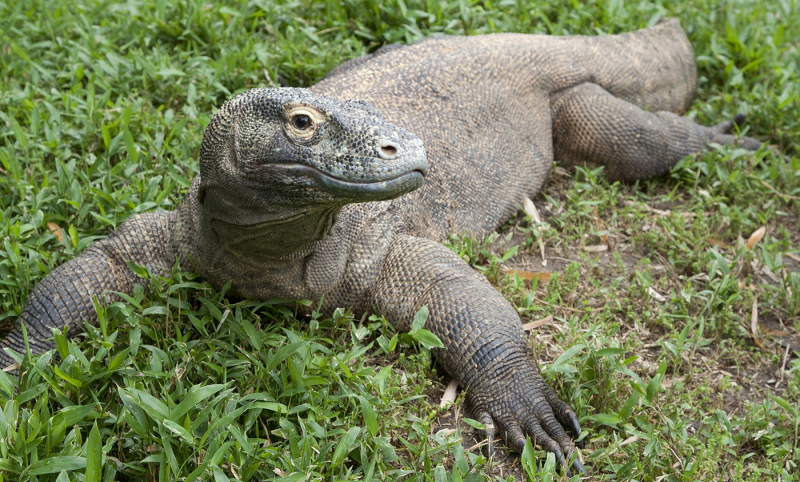
Photo: nationalzoo.si.edu -
One of the most hazardous groupings of scorpion species in the world, the genus Androctonus, is known by the common names Fattail scorpion or fat-tailed scorpion. They can be found all over the Middle East and Africa's arid and semi-arid regions. They grow to a length of 10 cm, which is a moderate size for scorpions. Their Latin name, which means "man killer," has Greek roots and it comes from their distinctively fat metasoma or tail. Their venom is particularly toxic and contains strong neurotoxins. Each year, stings from Androctonus species are known to kill a number of people. Antivenom is produced by a number of pharmaceutical companies to treat Androctonus envenomations.
The body of this variety of scorpions, which can be reddish brown, dark brown, or even black, seems dark throughout. Their physique has some areas that appear rough and grainy. These scorpions have sensitive hairs and spines all over their bodies, including the soles of their feet and pedipalps, which are highly helpful for identifying the terrain.
Fattail scorpions are only 10 cm long, but despite their small size, they have a potent sting. They are known as killer scorpions because of their venom's quick-acting harm to the neurological system and paralysis of the breathing system. A fattail scorpion can kill in a matter of seconds, although in the event of a sting, antivenom is available.
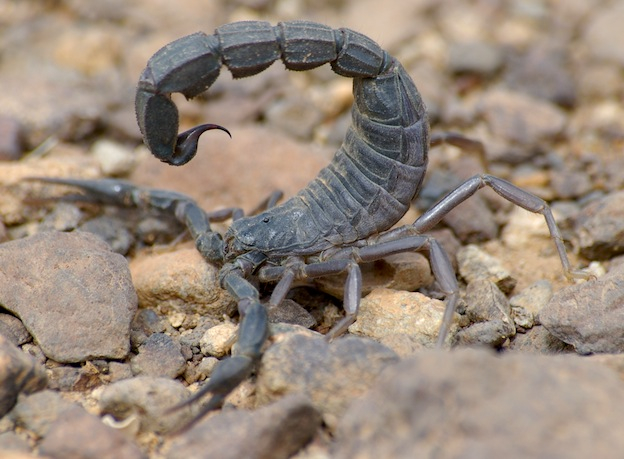
Photo: travel4wildlife.com 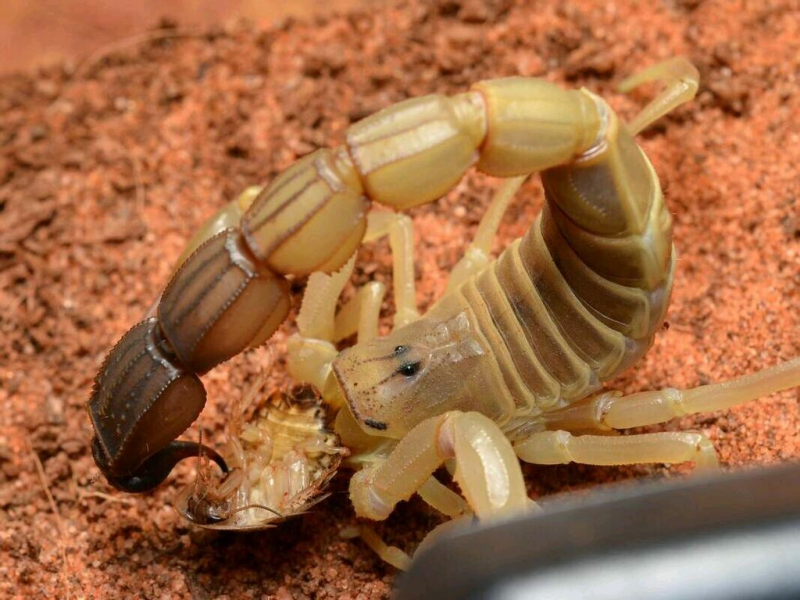
Photo: scorpohunter.com -
The Indian rhinoceros is a rhinoceros species that is indigenous to the Indian subcontinent. It is also known as the Indian rhino, greater one-horned rhinoceros, or great Indian rhinoceros. Due to fragmented populations that are confined to an area of fewer than 20,000 km2, it is categorized as Vulnerable on the IUCN Red List. Additionally, it is believed that human and livestock encroachment has reduced the size and quality of the alluvial Terai-Duar savanna, grasslands, and riverine forest, the rhino's most crucial habitat.
Indian rhinos, also known by their scientific name Rhinoceros unicornis, are among the most hazardous creatures in Asia due to their propensity for causing significant harm. These ferocious and unpredictable animals are best avoided because of their armor-plated exterior and enormous size.
A huge Indian rhino can grow to be 2 meters tall and weigh up to 4 tons. The Indian rhino, which can go at speeds of 60 km/h, has poor eyesight, but it also has a violent temper and is inclined to charge at the slightest provocation. The rhino in India is most prone to attack anything, even tigers and trucks. However, due to the usage of its horn in traditional Chinese medicine, it is sadly threatened.
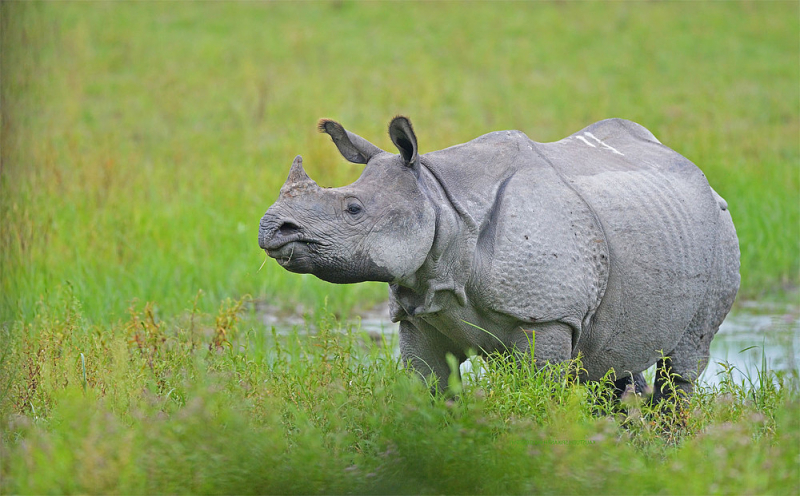
Photo: wwfindia.org 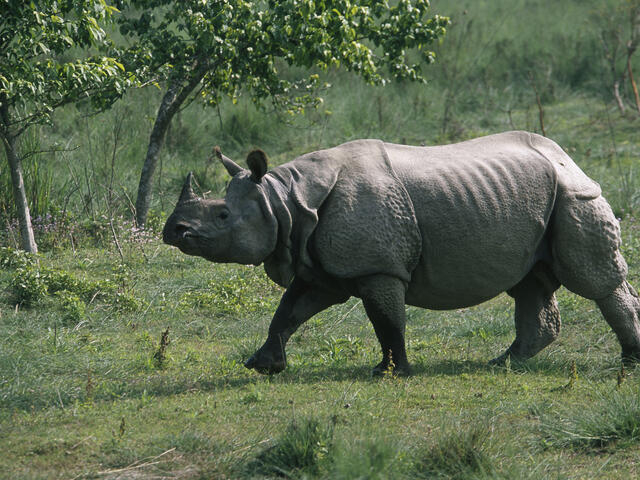
Photo: worldwildlife.org -
The next position on the list of the most dangerous animals in Asia is the bull shark which is a requiem shark that is often found around the world in warm, shallow waters along coasts and in rivers. It is also known as the "Lake Nicaragua shark" in Nicaragua and the "Zambezi shark" in Africa. It is well recognized for its hostile behavior and for existing in warm, shallow brackish and freshwater environments, including estuaries and rivers.
Bull sharks are able to survive in both fresh and salt water, and they can move very far up rivers. Up the Mississippi River, they have been observed as far as Alton, Illinois, which is nearly 1,100 kilometers from the coast. But few encounters between people and sharks in freshwater have been documented. Bull sharks of a larger size are likely to be involved in most near-shore shark attacks, including many bites that are thought to have come from different species.
Perhaps the deadliest of them all is the bull shark or Carcharhinus leucas in scientific terms. Bull sharks love living in shallow waters, thus they are most active towards the coast. Over a span of 400 years, China has experienced the bulk of shark attacks, resulting in roughly 50 fatalities. With a high occurrence of bull sharks, Iran is thought to be the most popular target in the Middle East.
There are tiger sharks, bull sharks, makos, and great white sharks in the Philippines, making it Asia's shark capital without a doubt. The oceanic whitetip shark, or Carcharhinus longimanus, provides the most prey.
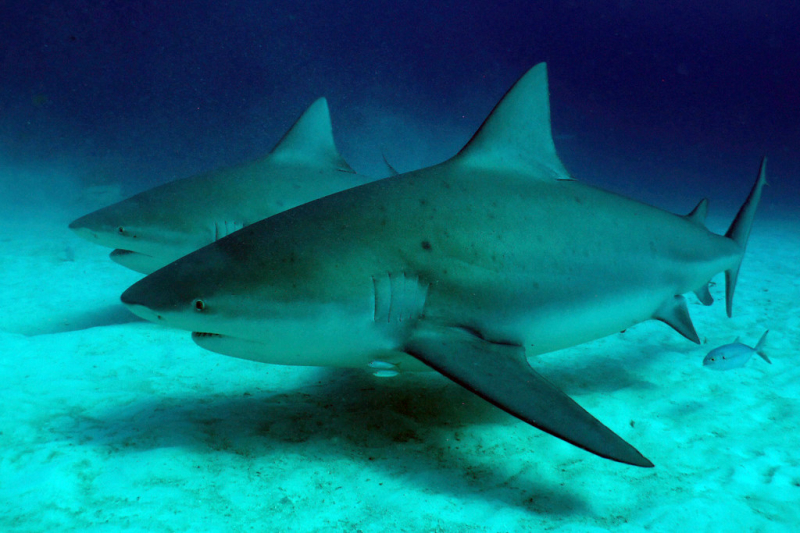
Photo: chesapeakebay.net 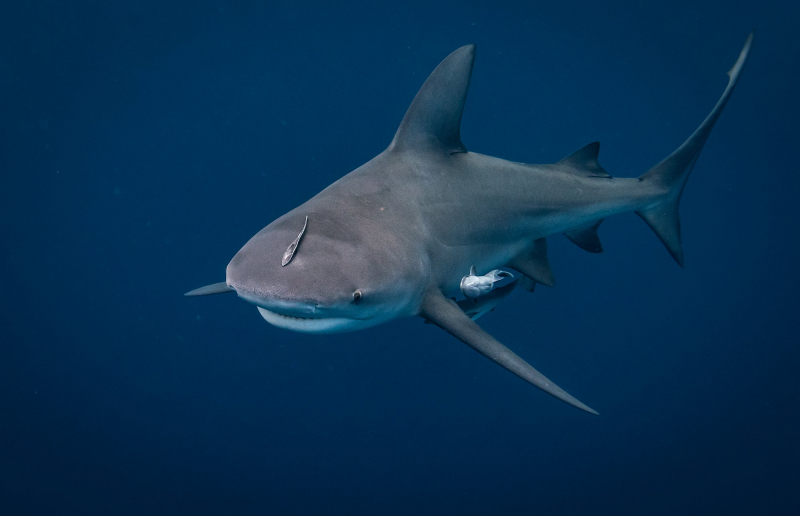
Photo: australiangeographic.com.au -
The largest living terrestrial animal in Asia is the Asian elephant. Due to a population drop of at least 50% over the previous three generations of elephants, or roughly 60–75 years, the Asian elephant has been categorized as Endangered on the IUCN Red List since 1986. The main threats to it are habitat loss, habitat degradation, habitat fragmentation, and poaching. The wild population was predicted to number 48,323-51,680 people in 2019. When housed in semi-natural settings, such as forest camps, female captive elephants have lived for more than 60 years. Asian elephants in zoos typically die significantly younger; as a result of low birth rates and a high mortality rate, captive populations are in decline.
Although docile when left alone, these gentle giants can turn into brutes when they encounter seasonal fluctuations in hormone levels. The Asian elephant is the second largest mammal on Earth after the African elephant - here you can study the distinctions between them. When this occurs, male elephants have testosterone levels 60 times higher than usual, which is connected to violence. Elephant females can be just as deadly when defending their babies. You should read our article on avoiding an elephant assault because rogue elephants can be just as hazardous.
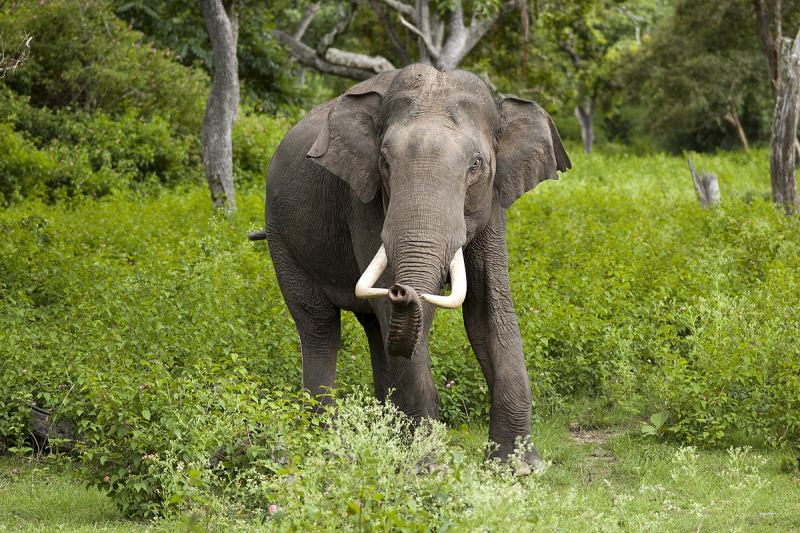
Photo: wikipedia 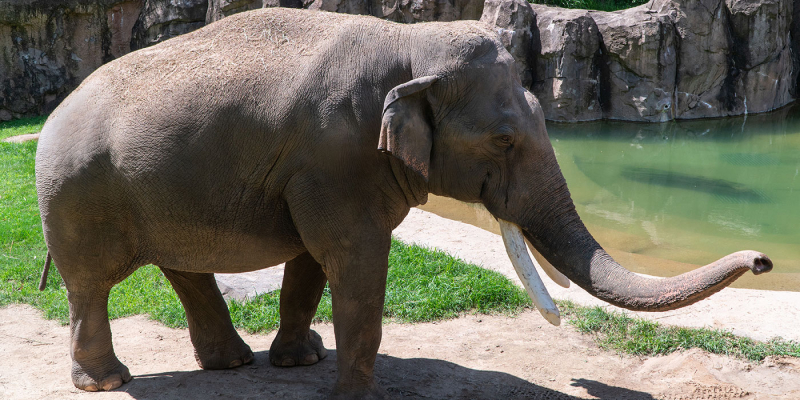
Photo: nationalzoo.si.edu -
The mugger crocodile, also known as the marsh crocodile and mugger, is a medium-sized broad-snouted crocodile. It is a native of freshwater ecosystems, including marshes, lakes, rivers, and man-made ponds, from southern Iran to the Indian subcontinent. It is a strong swimmer and rarely grows longer than 5 m (16 ft 5 in), but during the hot season, it also wanders on land to find suitable water bodies.
From the gharial to the saltwater crocodile, Asia is home to a wide variety of crocodile species. Crocodylus palutris, also known as the mugger crocodile, is one of Asia's deadliest predators.
The gharial, or fish-eating crocodile, Gavialis gangeticus, which is found on the Indian subcontinent, is another deadly species. The gharial, which may grow to a length of 6.2 m (11 ft), is the longest crocodile. The gharial travels at a speed of 24 km/h (15 mph) and eats fish, crabs, and amphibians. However, if disturbed, it can also attack people. In the image shown, a gharial is visible. The mugger Crocodile is one of the most dangerous animals in Aisa.
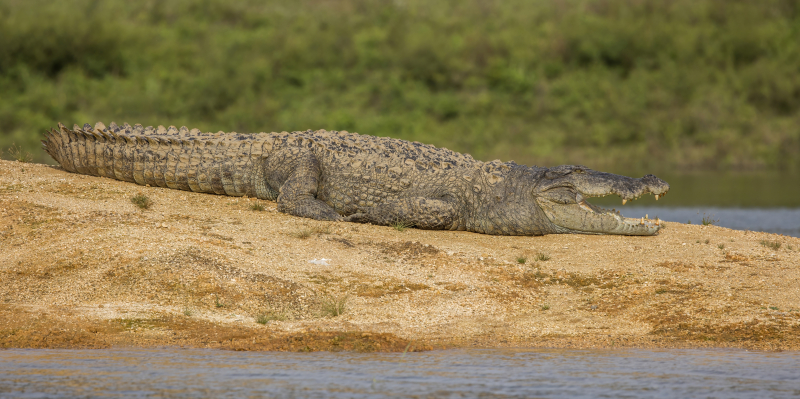
Photo: wikipedia 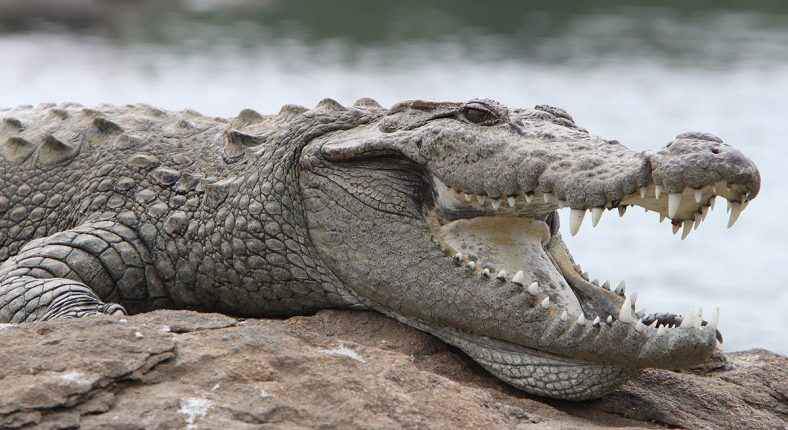
Photo: theanimalfacts.com -
The largest hornet in the world is the Asian giant hornet, often known as the northern giant hornet or Japanese giant hornet due to its color variation. It is indigenous to South Asia, Mainland Southeast Asia, temperate and tropical East Asia, and areas of the Russian Far East. It was also discovered in the Pacific Northwest of North America in late 2019 and nests were discovered there in 2021. This raised concerns that it would spread and become an invasive species.
The scientific name Vespa mandarinia and the nickname "yak-killer hornet" are also used to refer to the Asian Giant Hornet. These enormous wasps have a lethal 6 mm stinger and can reach a length of around 5 cm. At about 7.5 cm wide, their wingspan is also unusually broad.
The venom of the Asian giant hornet is a strong mixture of neurotoxic and cytotoxic chemicals that damages tissue and produces excruciating agony. Mandaratoxin, another element of this wasp's venom, can be fatal when it comes into touch with your body if you've been stung by multiple Asian giant hornets.
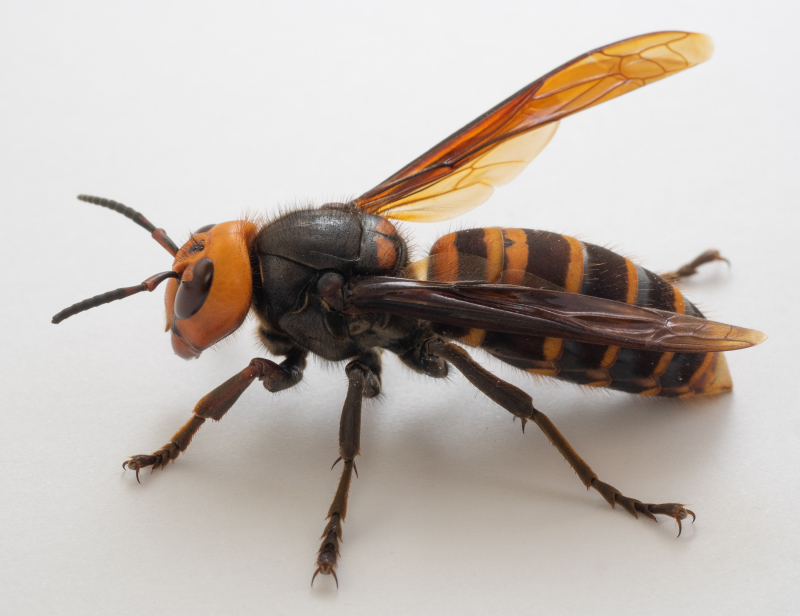
Photo: wikipedia 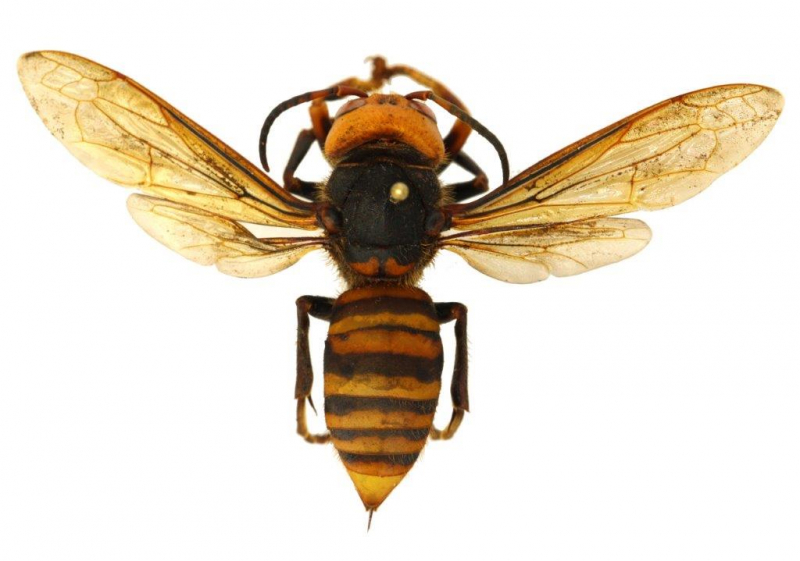
Photo: wikipedia -
A myrmecophagous bear species that is native to the Indian subcontinent is the sloth bear. It eats fruits, ants, and termites for food. Its vulnerability is noted on the IUCN Red List mostly as a result of habitat loss and degradation.
Due to its lengthy bottom lip and palate that are employed for sucking up insects, it has sometimes been referred to as a "labiated bear." It has a mane around its face, large, sickle-shaped claws, and long, shaggy fur. Compared to brown and Asian black bears, it is lankier. It developed from the ancestor brown bear during the Pleistocene through divergent evolution and shares traits with insectivorous animals.
It is among Asia's most hazardous creatures. Melursus ursinus is the scientific name for this dweller of India, which may weigh anywhere from 55 to 200 kg, grow to a length of 1.9 m, and move at rates of up to 40 km (25 mi) per hour.
The food of sloth bears, who are omnivorous creatures, primarily consists of termites, fruits, plants, and honey. Even if they don't hunt mammals, they will attack people who enter their area unintentionally, which results in 5 to 10 fatalities yearly. The sloth bear is an unquestionably dangerous animal, and with its enormous size and strong sickle-shaped claws, it is undoubtedly a force to be reckoned with.
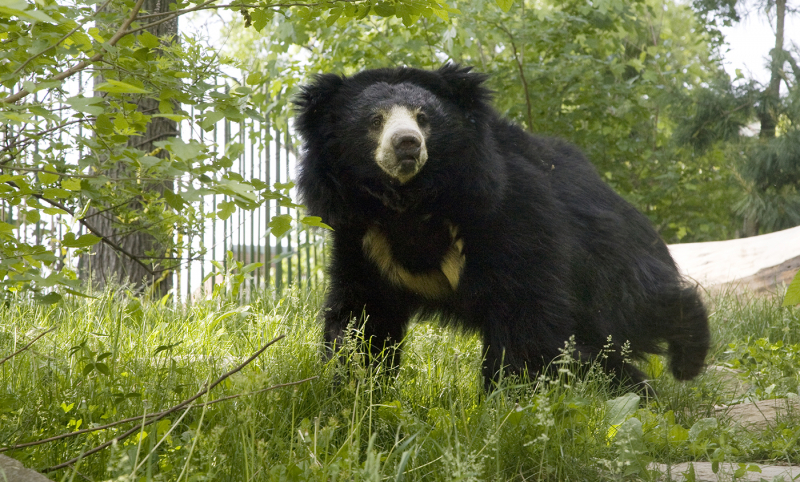
Photo: nationalzoo.si.edu 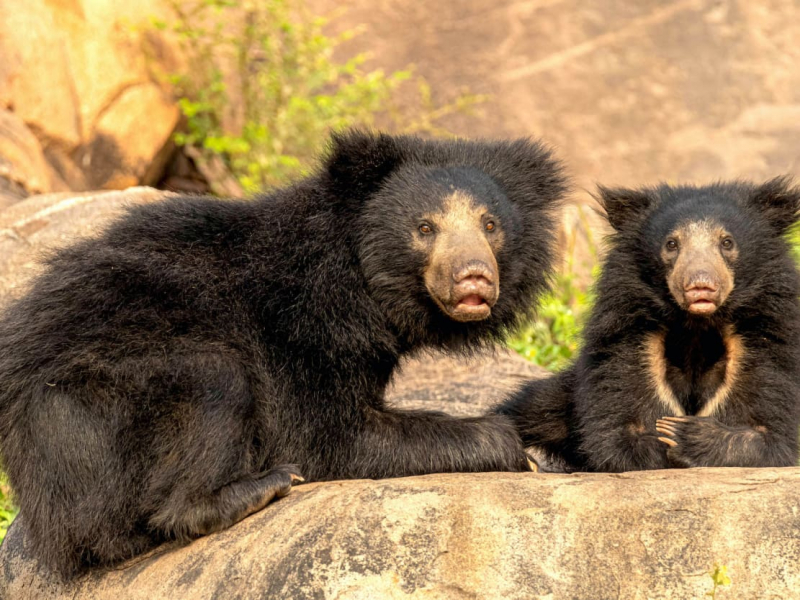
Photo: roundglasssustain.com -
One of the most dangerous animals in Asia is the Bengal tiger. The Panthera tigris tigris subspecies includes the Bengal tiger in its population. It is one of the largest wild cats still in existence. It is regarded as a member of the charismatic megafauna.
It is believed that tigers have lived on the Indian subcontinent since the Late Pleistocene, or between 12,000 and 16,500 years ago. Poaching, habitat degradation, and fragmentation are its current threats. By 2011, it was believed that there were fewer than 2,500 wild individuals left. There aren't any Tiger Conservation Landscapes in its range that are deemed big enough to sustain a population of more than 250 adults.
Due to its unique skin and usage of its body parts in traditional medical practices, the Bengal tiger has been a target for both hunters and locals. But those are not the only causes of Bengal tigers' extinction. The Bengal subspecies of tigers is the largest subspecies of tigers in the world.
The Bengal tiger is the apex predator in the food chain and is capable of suffocating even a buffalo weighing several tons. In actuality, several Bengal tigers have eaten humans. The Bengal tiger, which lives in East and Southern Asia, can grow to 3.2 m in length and weigh more than 230 kg. Bengal tigers are capable of running at 65 km/h.
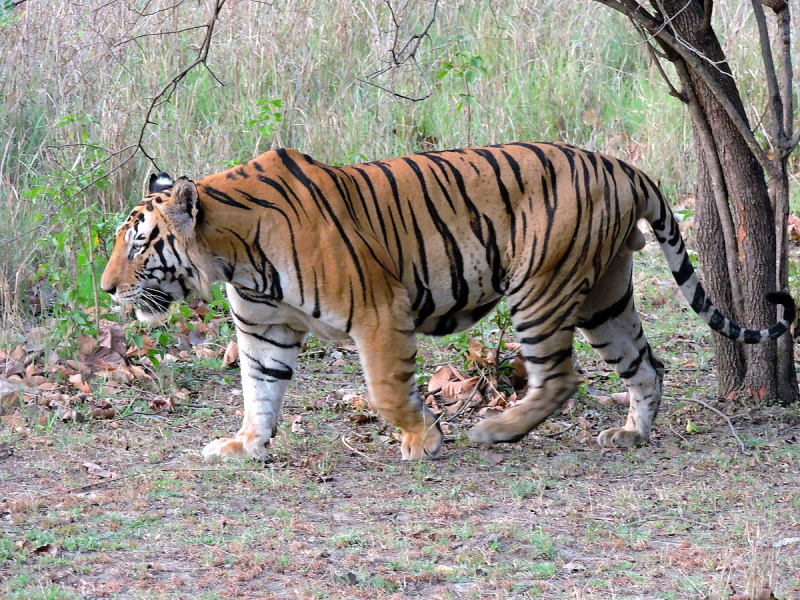
Photo: wikipedia 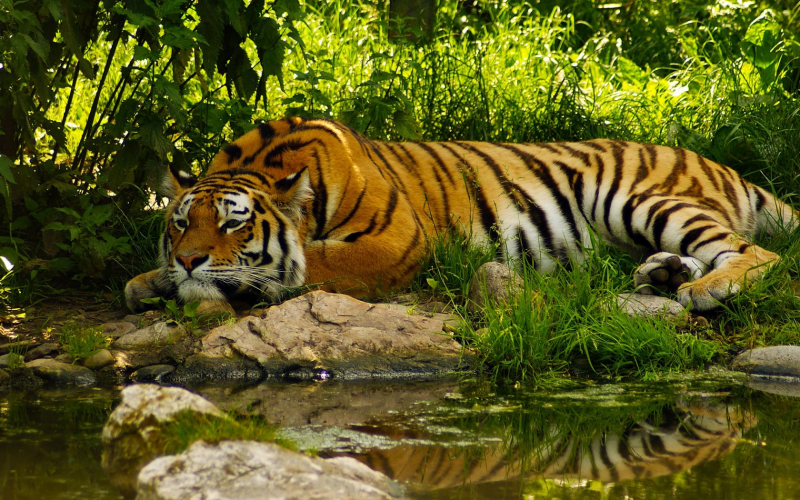
Photo: wikipedia -
Only India's population of Panthera leo leo, known as the Asiatic lion, still exists in the wild today. Its range has been confined to Gir National Park and the neighboring areas in the Indian state of Gujarat since the turn of the 20th century. It once populated a large portion of the Middle East and northern India.
The color of the Asiatic lion's fur varies from ruddy-tawny with prominent black spots to sandy or buffish grey, occasionally with a silvery shine in certain lighting. Males' ears are constantly visible because of the mild mane development on top of their heads. On the cheeks and throat, where it is barely 10 cm long, the mane is sparse. In comparison to African lions, who only have one foramen on either side, almost half of the Asiatic lion skulls from the Gir forest had divided infraorbital foramina.
The Asiatic lion, also known as Panthera leo persica, is a similarly ferocious animal. The Asiatic lion, which may be found in India and Pakistan, is smaller than the more well-known African lion. It can grow to a length of 2.9 m, weigh between 110 and 190 kg, and stand up to 1.1 m tall. The shorter mane of the Asiatic lion is another way to identify it.
The Asiatic lion can be deadly to people despite its modest size because it can move quickly. They occasionally hunt small mammals since they are opportunistic hunters, but they prefer larger prey.
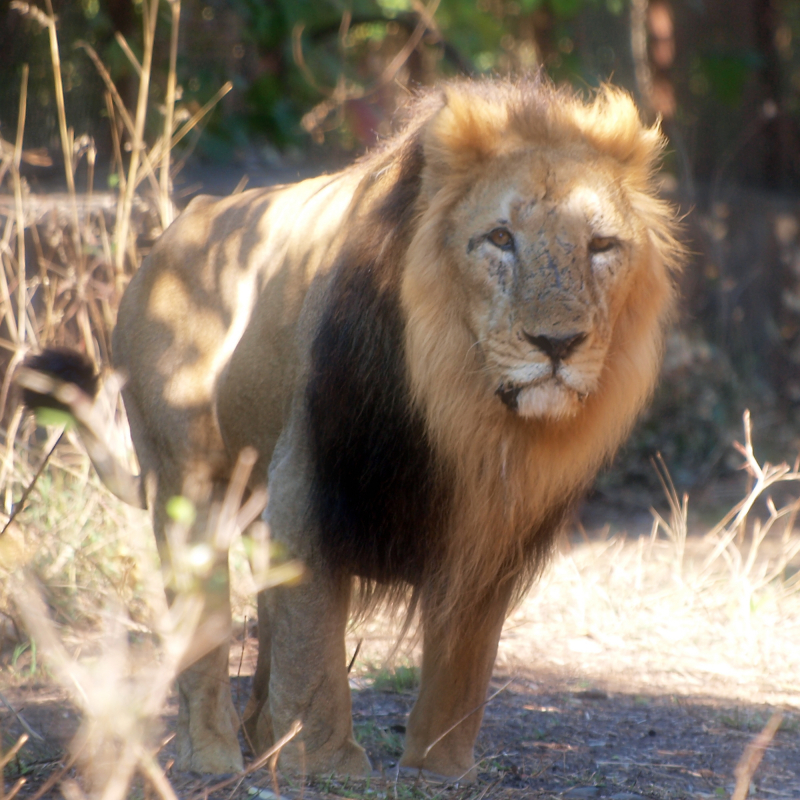
Photo: wikipedia 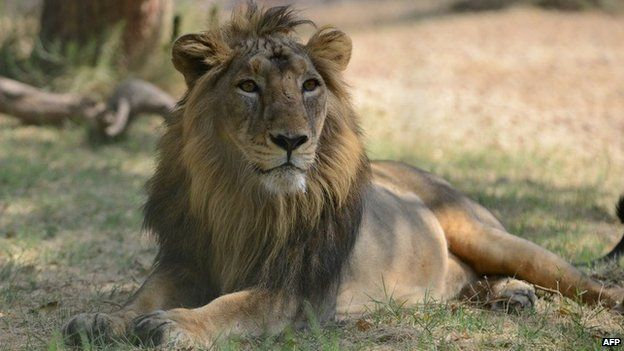
Photo: bbc.com












